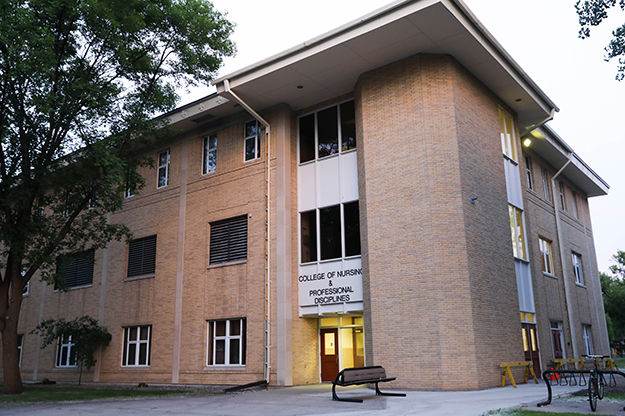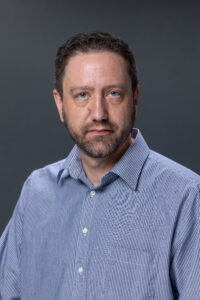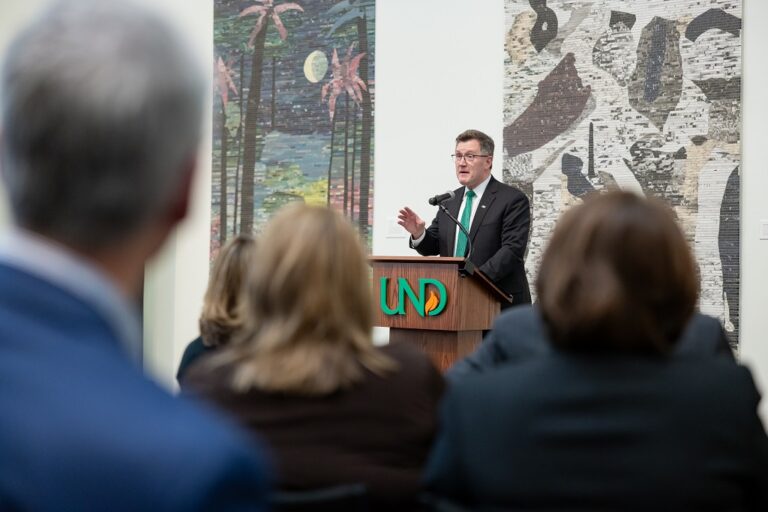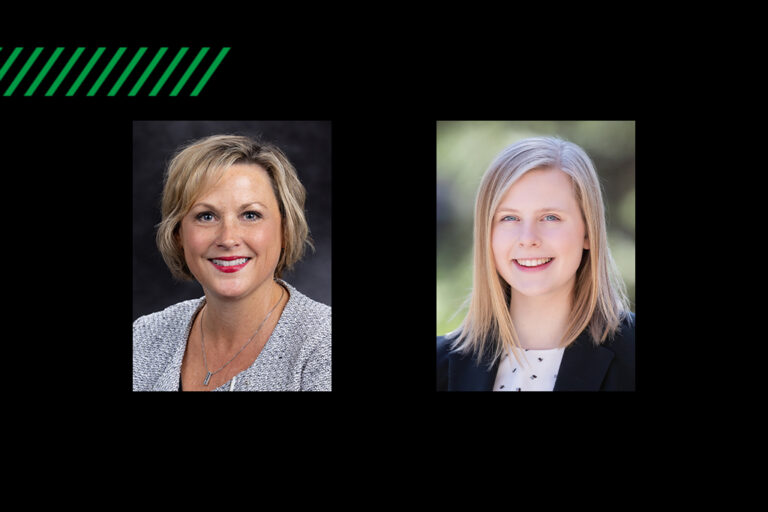A journey, a family and a legacy
Heidi Crawford is among latest graduates of Recruitment & Retention of American Indians into Nursing (RAIN) program

Just recently, Heidi Crawford’s grandmother told her she had created a legacy in her family: the legacy of graduating from a four-year-university.
Crawford, at the upcoming winter commencement ceremony, is set to walk across the stage as one of UND’s newest nursing graduates and alumna of the Recruitment & Retention of American Indians into Nursing (RAIN) program.
It wasn’t easy. It took years of work that began even before she became a student at UND. She had previously studied at the tribal college at the Sisseton Wahpeton Oyate Lake Traverse Reservation in South Dakota, and ultimately earned her Licensed Practical Nurse certification. After graduating from UND, she will return to that community and put her skills to use.
“It has definitely been a journey,” Crawford said. “I was just actually thinking about everything in the last few weeks, and I never thought I’d be here. I mean, just in school period.”
Crawford said she dropped out of high school to take care of a sick family member, and then went on to get her GED. In 2012, she entered the tribal college at her reservation, and graduated two years later. It took another year to pass the licensing exam, and she was working at the nearby Indian Health Service clinic when she chanced upon Barb Anderson, director of the RAIN program at UND, and Deb Wilson, the former RAIN director. The pair were visiting the reservation to recruit for the program.
They asked her if she wanted to come to UND to complete a four-year-education in nursing. For Crawford, it was a chance to take her two children, Isabell and Rose, away from the reservation, where — tragically — violence against Indigenous women is prevalent, and solutions to the problem are still being sought. She said yes to UND, and in 2017 made the journey to Grand Forks, a place she had visited only once before.
“The one time I came to Grand Forks was for a George Strait concert,” Crawford said.
Why nursing?
Crawford said there are limitations to living on the reservation. People often find themselves either working for the tribe or working at a casino, as the local economy means there are not many other opportunities. She wanted a challenge and found it in nursing.
Studying at UND, it turned out, was indeed a challenge, but Crawford made use of the robust support services and academic assistance offered by the RAIN program.
“I’ve never done so much reading in my life until I came here,” Crawford said.
Continuing the legacy
Walking between classes, Crawford sometimes sees a familiar face: her daughter Isabell, who is now a UND freshman. Not too many people attend university alongside their teenage daughter, which Crawford said makes her time on campus more special. Even if it was a bit embarrassing at first.
“It was a little weird,” Crawford said. “She was embarrassed in the beginning, but then it took her like a couple of weeks and then she was texting me, “Come and have lunch at the Union, my treat!’”
Isabell, Crawford said, is very focused on her education, which means there is ample opportunity to continue the newly established legacy in the family of getting a university education. And don’t forget Rose, who is a student at Central High School in Grand Forks. Rose, too, seems well on her way to continuing the legacy, as she’s already taking courses for college credit.
“After my generation, Isabell is the only one in college, so we are trying to keep it going,” Crawford said.
What is RAIN? Why is it important?

Alongside the Indians Into Medicine (INMED) program and the Indians Into Psychology Doctoral Education (INPSYDE) program, the RAIN program rounds out the trio of UND’s Quentin N. Burdick Indian Health Programs. The programs were named such in honor of the late North Dakota senator who was an advocate for Indigenous people.
The three programs are mandated legislatively by congressional action, with RAIN joining the trio in 1990. It is largely funded through the federal Indian Health Service, which is a part of the U.S. Department of Health and Human Services.
The programs exist to fulfill the nation’s obligations to Indigenous people by providing educational opportunities for the health professions. The long-term expected outcome of programs like RAIN is to place people of similar cultural backgrounds in healthcare positions on reservations to improve the health of those communities.
According to Anderson, who grew up on the Turtle Mountain Indian Reservation in north central North Dakota and is the RAIN director at UND, that has not always been the case.
“We had doctors who were not our people,” Anderson said. “None of the nurses were people from our communities. Now when I go back to my reservation, almost all of the nurses there have actually gone through the RAIN program in the College of Nursing & Professional Disciplines here at UND.”
Anderson recruits for the program in North Dakota, South Dakota, Montana, Nebraska, Wyoming, Wisconsin and Minnesota. When those recruits come to UND, the RAIN program positions them for success through nurse mentors and assistance with college-level writing. But the program is much more than just academic assistance.
“Our former director Deb Wilson always said, ‘Once we get our hands on you, we’re not going to let you go,’” Anderson said.
That means everything from pep talks for discouraged students to a wide variety of other services, such as emergency day care for children should the child’s regular day care shut down. Cab rides are available for students if their cars break down, and when one student could not afford eyeglasses, a pair was provided for them. These services are provided from Alumni funding from various donors for the RAIN Program, not through federal funding.
RAIN mentors also assist with scholarships, which are on offer through Section 112 at the IHS. Crawford received such a scholarship, which covered her tuition and gave her a monthly stipend. In return for the financial assistance, scholarship recipients are contractually obligated to work for two years at an IHS clinic or hospital. Crawford has decided to work at the clinic on her reservation in South Dakota. It is her goal to contribute to her community, perhaps by caring for elderly people.
“I just want to be able to help with extending the life expectancy on our reservation,” Crawford said.
And as for Anderson, she wants to get back to recruiting to meet the health needs of Indigenous communities.
“We have people telling us ‘Send us more nurses, they’re great, they’re well trained,’” Anderson said. “UND does a wonderful job in the nursing program, and they’re very capable, and leaders in the nursing professions.”



